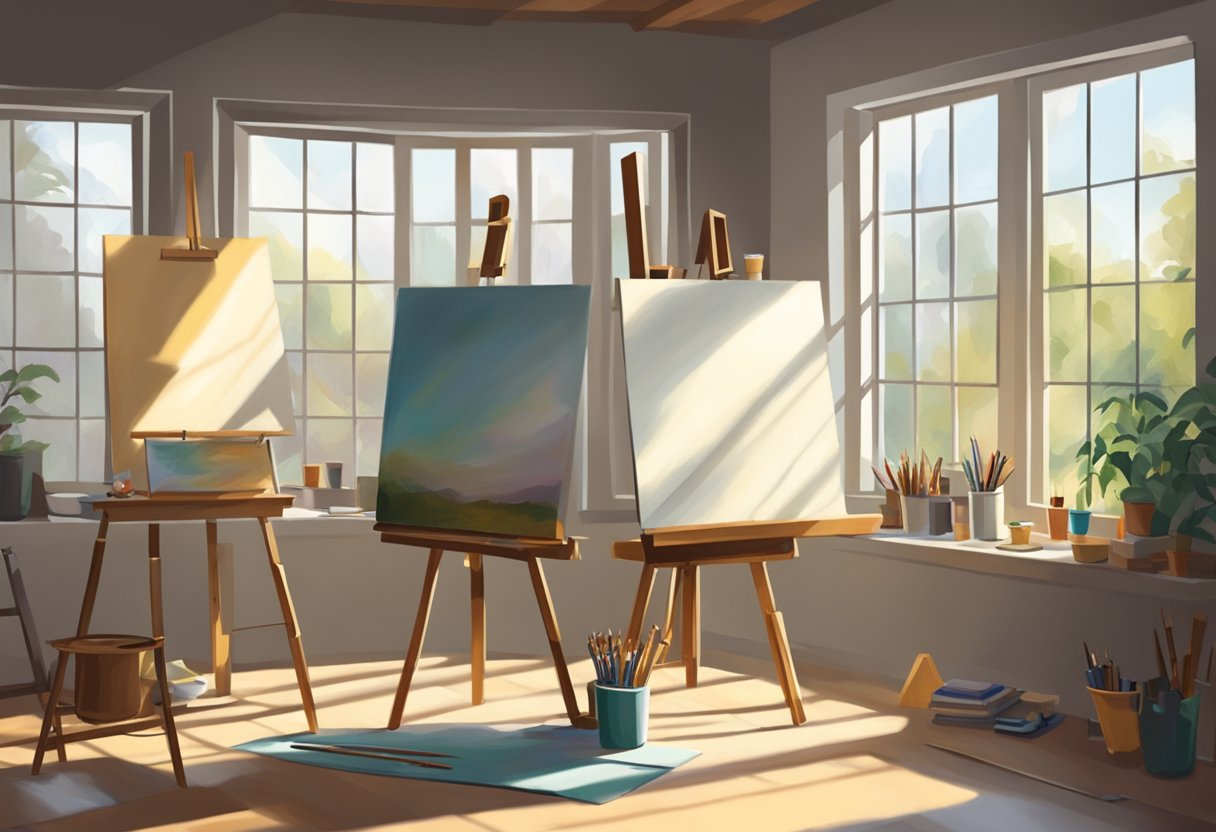
The world of art is not confined to traditional canvases and galleries alone. Artists and enthusiasts alike have discovered the artistic potential in everyday objects, transforming them into creative masterpieces. One such object that has gained significant attention is the humble cup. In this article, we delve into the captivating realm of Custom Party Cups, exploring their artistic significance, creative possibilities, and their role in personal expression, marketing, and sustainability.
As humans, we are naturally drawn to objects that reflect our personality and style. Custom cups provide an avenue for self-expression and a tangible representation of our individuality. Whether it’s a mug adorned with a favorite quote or a personalized tumbler with a unique design, custom cups offer a delightful way to showcase our creativity while sipping our favorite beverages.
The Appeal of Custom Cups
1. Personalization and Expression
Custom cups allow us to break free from mass-produced monotony and embrace a more personalized experience. By adding custom designs, patterns, or text, we can create cups that resonate with our identity and bring joy to our daily routines.
2. Marketing and Branding
Businesses have also recognized the power of custom cups as marketing tools. Customized cups with company logos or brand messages serve as effective promotional merchandise, leaving a lasting impression on customers. These cups not only provide a practical function but also act as mobile advertisements, increasing brand visibility.
Custom Cups as Artistic Canvas
The surface of a cup presents a unique artistic challenge and an opportunity for creativity. From hand-painted designs to intricate illustrations, custom cups serve as miniature canvases for artists to showcase their skills and imagination.
1. Exploring Various Designs and Techniques
Artists and designers experiment with a wide range of techniques when customizing cups. They employ methods such as ceramic painting, decoupage, laser engraving, and even 3D printing. Each technique offers its own distinct aesthetic, allowing for endless possibilities in cup customization.
2. Custom Cups and Contemporary Art
Custom cups have also found their place within the realm of contemporary art. Renowned artists have embraced this medium, using cups as a means to communicate their artistic vision. Their creations blur the boundaries between functional object and art piece, challenging our perception of what can be considered art.
Unleashing Creativity through Custom Cups
1. DIY Customization
Custom cups empower individuals to become artists in their own right. DIY enthusiasts can embark on exciting projects, transforming plain cups into extraordinary pieces through painting, decaling, or other customization methods. It’s an opportunity to explore one’s creativity, resulting in personalized cups that are truly one-of-a-kind.
2. Collaboration and Community
The world of custom cups extends beyond individual creativity. Collaborative projects and community events bring together artists, designers, and cup enthusiasts to share their skills, knowledge, and passion. These interactions foster a sense of belonging and inspire further artistic exploration.
The Role of Custom Cups in Everyday Life
1. Morning Rituals and Personalized Cups
For many, a cup of coffee or tea in the morning is an essential part of their daily routine. Custom cups add a touch of personalization to this ritual, making it more enjoyable and meaningful. Sipping from a cup that reflects one’s personality sets a positive tone for the day ahead.
2. Special Occasions and Customized Mementos
Custom cups have become popular choices for special occasions and celebrations. Whether it’s a wedding, birthday, or corporate event, customized cups can be tailored to match the theme, serving as memorable keepsakes for attendees. These cups encapsulate the essence of the event, evoking fond memories long after the occasion has passed.
Custom Cups in Business and Events
1. Promotional Merchandise
Custom cups offer businesses a versatile and cost-effective marketing tool. By incorporating their brand elements into cup designs, companies can create promotional merchandise that engages customers and fosters brand loyalty. Custom cups also make excellent giveaways at trade shows and corporate events, ensuring a lasting impression.
2. Custom Cups at Trade Shows and Conferences
Trade shows and conferences provide an ideal platform for showcasing custom cups. These events attract diverse audiences, allowing businesses to reach potential customers and partners. Exhibiting custom cups not only captures attention but also provides an opportunity to initiate conversations and build valuable connections.
Sustainability and Eco-Friendly Custom Cups
1. Ethical Consumerism
In an era of growing environmental awareness, custom cups contribute to sustainable consumption practices. By opting for reusable custom cups instead of disposable alternatives, individuals can minimize waste and reduce their ecological footprint. Ethical consumerism becomes a statement of personal values, promoting a greener lifestyle.
2. Environmentally Conscious Practices
Many custom cup manufacturers prioritize sustainability by using eco-friendly materials and production methods. From bamboo fiber cups to recycled glass tumblers, these alternatives minimize the environmental impact associated with cup production. By choosing eco-conscious custom cups, consumers can support responsible manufacturing practices.
Want to learn more about arts? You might want to read about Art of Landscape Photography.
Custom cups serve as a fascinating intersection between art, personal expression, and everyday functionality. They offer an opportunity to infuse creativity into our lives and communicate our unique identities. From DIY projects to collaborations, the world of custom cups thrives on the passion and imagination of individuals and communities. Whether as personal mementos or marketing tools, these cups leave a lasting impression while promoting sustainability and ethical consumption.



 Renovating a kitchen is more than a mere upgrade; it’s a dramatic overhaul of the home’s core, where every choice in material and design shapes the domestic landscape. But what if these transformations by Kitchen Renovations Perth were captured through the eye of a camera, framing the artistry and dedication behind the dusty overalls and paint swatches? That’s where photography doesn’t just document change; it celebrates the evolution of space from mundane to magnificent.
Renovating a kitchen is more than a mere upgrade; it’s a dramatic overhaul of the home’s core, where every choice in material and design shapes the domestic landscape. But what if these transformations by Kitchen Renovations Perth were captured through the eye of a camera, framing the artistry and dedication behind the dusty overalls and paint swatches? That’s where photography doesn’t just document change; it celebrates the evolution of space from mundane to magnificent.


 Artistic expression knows no boundaries, constantly seeking innovative ways to push the limits of imagination. Photography, in particular, has a unique ability to capture moments and emotions that resonate with viewers. As artists and photographers continue to experiment with unconventional materials, one unexpected medium has emerged—insulation and spray foam.
Artistic expression knows no boundaries, constantly seeking innovative ways to push the limits of imagination. Photography, in particular, has a unique ability to capture moments and emotions that resonate with viewers. As artists and photographers continue to experiment with unconventional materials, one unexpected medium has emerged—insulation and spray foam.


 It would be difficult for begginers to start and take up pottery as a hobby. With any new project, it can feel like there is a lot to learn. But don’t worry, you only have to do one thing at a time. Pottery can be made in three main ways. When you start, it helps to pick one technique to focus on. There are mainly three ways to make pottery:
It would be difficult for begginers to start and take up pottery as a hobby. With any new project, it can feel like there is a lot to learn. But don’t worry, you only have to do one thing at a time. Pottery can be made in three main ways. When you start, it helps to pick one technique to focus on. There are mainly three ways to make pottery: The framing industry has long strived to provide customers with value for money and various high-quality frames. Wood is obtained from multiple trees for this purpose. However, picture frame moldings can be divided into two categories: hardwood frames and softwood frames.
The framing industry has long strived to provide customers with value for money and various high-quality frames. Wood is obtained from multiple trees for this purpose. However, picture frame moldings can be divided into two categories: hardwood frames and softwood frames.

 Sustainability has become more critical in recent years, and biophilic design has become so popular that wood is increasingly being used in interior design.
Sustainability has become more critical in recent years, and biophilic design has become so popular that wood is increasingly being used in interior design. Communication is a very important thing about photography. In other words, we are able to say that photography may be a tool for communication. It is often verbal or non-verbal communication. There are two sides to a photographer, one is technical and therefore the other is artistic. If the photographer arranges the topic in a very scene so they create sense is that the one side of the photography. On the opposite hand, if you’re thinking that artistically then you arrange the topics in a very scene to impress the emotions. There are some similarities between an excellent photographer like the creative eye, and therefore the ability to speak to their subject or clients. When the photographer captures the image, it’s important that their image communicate effectively because it’s a good impact on your photos.
Communication is a very important thing about photography. In other words, we are able to say that photography may be a tool for communication. It is often verbal or non-verbal communication. There are two sides to a photographer, one is technical and therefore the other is artistic. If the photographer arranges the topic in a very scene so they create sense is that the one side of the photography. On the opposite hand, if you’re thinking that artistically then you arrange the topics in a very scene to impress the emotions. There are some similarities between an excellent photographer like the creative eye, and therefore the ability to speak to their subject or clients. When the photographer captures the image, it’s important that their image communicate effectively because it’s a good impact on your photos.

 Most people get into photography because it’s fun and exciting. But once you do photography as employment or perhaps if you’re in class studying photography, it can every now and then lose its luster. Finding ways to bring joy and fun back to photography is a challenge, but maybe a worthwhile pursuit. I’m sure most folks are there at it slow or another. Photography can from time to time desire a chore, rather than something you would like and are excited to try to do. Maybe it’s because photography is your career and you have got been focused on the photography needs of others and not your own goals. Or perhaps things became so technical and formulaic that the play has been taken out of the medium for you. irrespective of true, once you lose the enjoyment that drew you to the medium, it may be frustrating, to mention the smallest amount.
Most people get into photography because it’s fun and exciting. But once you do photography as employment or perhaps if you’re in class studying photography, it can every now and then lose its luster. Finding ways to bring joy and fun back to photography is a challenge, but maybe a worthwhile pursuit. I’m sure most folks are there at it slow or another. Photography can from time to time desire a chore, rather than something you would like and are excited to try to do. Maybe it’s because photography is your career and you have got been focused on the photography needs of others and not your own goals. Or perhaps things became so technical and formulaic that the play has been taken out of the medium for you. irrespective of true, once you lose the enjoyment that drew you to the medium, it may be frustrating, to mention the smallest amount.

 When it comes to glass repair, it is best to hire the services of glass repair experts like Carshalton glass repair. Glass is very delicate and could be dangerous if handled improperly and carelessly. By hiring a professional glazier, you can be certain that they have the knowledge, skills, as well as the tools and equipment to safely and efficiently carry out the job, whether it is a simple or complex.
When it comes to glass repair, it is best to hire the services of glass repair experts like Carshalton glass repair. Glass is very delicate and could be dangerous if handled improperly and carelessly. By hiring a professional glazier, you can be certain that they have the knowledge, skills, as well as the tools and equipment to safely and efficiently carry out the job, whether it is a simple or complex. Glass is indeed an amazingly versatile material that it isn’t only used as a construction material but as art as well. Glass could be formed and shaped in various ways whilst retaining its artistic quality of bending and reflecting light in a unique way. Because of the versatility of glass, it has resulted in an extensive range of glass
Glass is indeed an amazingly versatile material that it isn’t only used as a construction material but as art as well. Glass could be formed and shaped in various ways whilst retaining its artistic quality of bending and reflecting light in a unique way. Because of the versatility of glass, it has resulted in an extensive range of glass 



 Hanging art can occasionally soften the pleasure of collecting. You would like your new painting to appear perfect, but you cannot find a wall stud, so you are having difficulties with your degree, and the framework is a whole lot heavier than you understood. We have been there, however, luckily, there are a few simple methods for hanging artwork that may make the entire process much, much easier.
Hanging art can occasionally soften the pleasure of collecting. You would like your new painting to appear perfect, but you cannot find a wall stud, so you are having difficulties with your degree, and the framework is a whole lot heavier than you understood. We have been there, however, luckily, there are a few simple methods for hanging artwork that may make the entire process much, much easier.


